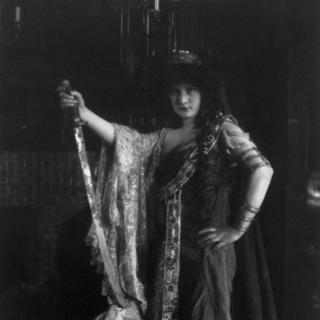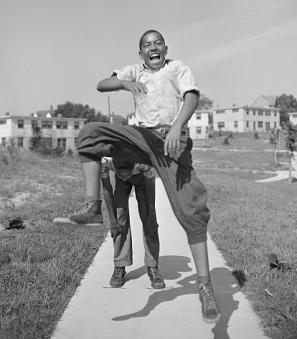D.C.'s 1904 Russian Bazaar
“Don’t you know there’s a war on?” That’s the usual refrain when your country is at war. But for Countess Marguerite Cassini, daughter of the Russian ambassador to Washington, the 1904-1905 war between Russia and Japan was a reason to have a two-day party. And if you say it’s for charity, why not?
There’s nothing capital society loves more than an all-out extravagant bash, and Cassini could turn public opinion in favor of Russia and raise money for the Russian Red Cross at the same time. But a problem presented itself: how could Cassini get government officials to attend a party in support of Russia, when America’s official stance was neutrality?
Disregarding America’s neutrality as a non-issue, the Countess marched directly to the White House with her plan to have President Teddy Roosevelt himself be the guest of honor. In disbelief, he declined. Mrs. Roosevelt? No. Their daughter, Alice Roosevelt? No, again. Cassini had one more question; what if she could get the Japanese ambassador to make a contribution to her cause? The chances of that happening probably seemed unlikely to the President considering that Japan was at war with Russia and the Countess was the daughter of the Russian ambassador. But, if Teddy truly didn’t want to commit then he shouldn’t have agreed, because Cassini always gets what she wants.
She drove straight from the White House to the Japanese Embassy and asked to be shown in to see ambassador Takahira Kogoro. After a series of bold statements (Cassini) and awkward silences (the Japanese diplomats), the Countess left with her contribution. And the benefit was on.
Alice Roosevelt appeared at the benefit as the guest of honor and all the prominent people of the city could attend with impunity. Any guests with misgivings soothed their conscience with the knowledge that the Red Cross would aid both wounded Russians and Japanese. Several guests also made equal donations to Japanese after attending Cassini’s event.
There was one more thing in the way of the party, and this was something even Marguerite Cassini couldn’t control: the weather. It rained for three days before the Countess decided Washington would simply have to get wet to go to her party. And still they came:
[Marguerite Cassini] will probably go down in history as the only woman living who could induce ambassadors and foreign ministers to stand about under dripping skies like ducks in a barnyard, or society women to trail through veritable puddles of muddy water dressed in their most exquisite lawn party attire, and cajole the passing throng into parting with fabulous amounts for mere trifles.[1]
The grounds looked like “washday on poverty row.”[2] The finest society ladies of the city wore nothing less than their French lawn party best, and were a sight to behold in their soaked slippers and skirts muddy up to their knees, water dripping from their lace picture hats. Half of the fine gentle men “look[ed] for all the world as if they ahd been to a cockfight, and had tasted the gore of the contestants” because the red dye from the tents bled all over their white shirtfronts” and all the other half like they’d entered a “free-for-all fight” and lost.[3]
This “awfully bohemian” affair was styled as a bazaar with hundreds of European items for people to buy, sent by friends on the continent, and whatever treasures Washington women could find in their homes to offer. A bookmark painted by none other than the Russian Empress was set aside for an auction. The largest booth was of course the Russian booth, ran by Alice Roosevelt, with the help of a bevy of children in Russian costume. Mrs. Alice Hay Wadsworth (president of the National Association Opposed to Woman Suffrage) was in charge of selling fine French hats, while Mrs. Hengemuller, wife of the Austrian ambassador, ran a flower booth. Stanislas Gutowski, a popular young attache of the Russian Embassy, tried his hand at running the auction and managed to “embarrass a few people into buying” but thankfully handed the task off to Mrs. Jusserand, wife of the French ambassador, after a short time.[4] There was even a beer garden run by Mrs. Eva Cromwell (later Mrs. Stotesbury and a character in the 2008 Stephen Sondheim musical Road Show) complete with pretty socialites as waitresses in German dress.
On the first day, the social butterflies flitted from booth to booth, flirting outrageously with each other and spending furiously. Tea which would cost a stranger 10 cents was sold to friends at anything from 25 cents to $5 a cup. The perfect example of such amusement could be found at the “Post Office” run by Louis Van Dyke Jones (niece of the real Postmaster General).
Her job was to sit behind a little counter and slyly give Count So-and-So or Mr. von Somebody a peak at an envelope addressed to him in the handwriting of some particular darling. When the gentleman of course would like a closer look, he was told that the postage cost 50 cents and had to be paid before he could receive the envelope. When he pays, “the address on the outside is the only autograph he will have to cherish of the winsome lass” for on the inside is only blank paper.[5] But they’d be back soon enough, eager to pay another 50 cents for the chance at love. Miss Jones closed the day at government hours. She’d certainly found the occupation profitable, pulling in nearly 50 dollars, but she became increasingly worried that Nick Longworth (Ohio senator and future Speaker of the House) and Charley McCawley (a brigadier general in the Marine Corps) would stage a heist for the mail addressed to them.
Between the ample opportunities to spend entirely spending too much money, there was entertainment to take in. A “polite” vaudeville was staged, with both professional and citizen performers. Members of the audience tried to out-do each other with shows of enthusiasm, probably egged on in no small part by the champagne. It culminated with one gentleman (perhaps the French Prince de Bearn) attempting to present the comedic opera player with the big floral centerpiece from his table. Further entertainment included a fortune teller from Atlantic City, whose services were reportedly of great interest to Alice Roosevelt in particular. And where was Countess Cassini in this circus? Signing pictures of herself for $1 a pop. Because, of course.
The second day, held inside at the Russian Embassy, was when “the conservative people, with less time for leisure” (AKA the working class) arrived to take a gander at the frivolities of the other half.[6] Although the bazaar was presented with reduced prices, the Washington Times reported that these “lesser moths” left their money at home. Those that could afford the 25 cent entry fee came merely for the chance to be inside the Embassy, and rub elbows with people who wore (and ruined) in a day what would take them a year to make.
Overall the bazaar was a grand success for the Russian Red Cross. Cassini, who was later honored by the Emperor for her effort, wrote in her memoirs that she raised $48,000. Contemporary papers put the amount at anywhere between $5,000 and $20,000. Whatever the actual amount, the Red Cross was no doubt very glad to have it. But despite the contribution, Russia lost the war completely, concluding the war in September 1905 with the Treaty of Portsmouth, brokered by Teddy Roosevelt. Well, the party was nice anyway.
Sources
“Bazaar Arouses Keen Expectancy: Countess Cassini Praying for Bright Skies.” The Washington Times. (Washington [D.C.]), 24 April 1904. Chronicling America: Historic American Newspapers. Lib. of Congress.
“Belmont to be Scene of Bazaar.” The Washington Times. (Washington [D.C.]), 08 April 1904. Chronicling America: Historic American Newspapers. Lib. of Congress.
“Cassini Charity Bazaar Promises Great Success.” The Washington Times. (Washington [D.C.]), 04 April 1904. Chronicling America: Historic American Newspapers. Lib. of Congress.
“Countess Cassini Fund: She Sends 17,000 to Russia as Contribution to Red Cross.” The Washington Times. (Washington [D.C.]), 18 May 1904. Chronicling America: Historic American Newspapers. Lib. of Congress.
“Rainfall Mars Russian Bazaar: But it Proves to be a Great Success.” The Washington Times. (Washington [D.C.]), 27 April 1904. Chronicling America: Historic American Newspapers. Lib. of Congress.
“Russian Bazaar.” The Washington Times. (Washington [D.C.]), 01 May 1904. Chronicling America: Historic American Newspapers. Lib. of Congress.
“Russian Bazaar Takes New Form: Countess Cassini Expands Original Program.” The Washington Times. (Washington [D.C.]), 06 April 1904. Chronicling America: Historic American Newspapers. Lib. of Congress.
“Sales Slow at Russian Bazaar: Public Failed to Grab the French Bargains.” The Washington Times. (Washington [D.C.]), 06 May 1904. Chronicling America: Historic American Newspapers. Lib. of Congress.




![Sketch of the mythical fuan by Pearson Scott Foresman. [Source: Wikipedia]](/sites/default/files/styles/crop_320x320/public/2023-10/Goatman_Wikipedia_Faun_2_%28PSF%29.png?h=64a074ff&itok=C9Qh-PE1)












